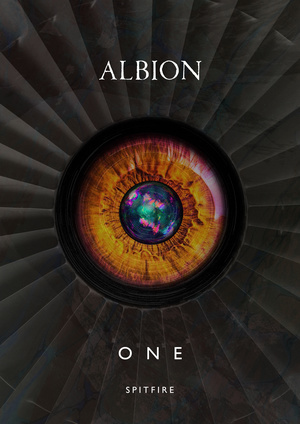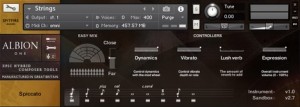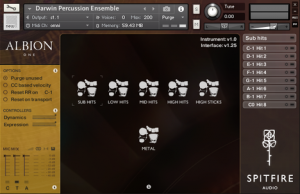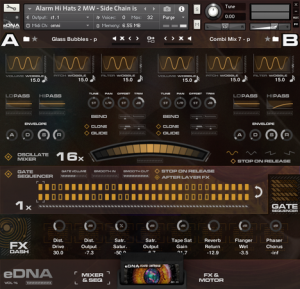Software Review: Albion One by Spitfire Audio
Founded in 2007, UK-based Spitfire Audio’s products have rapidly become a de facto part of many a modern composer’s sample-based toolkit.
Back in 2011, Spitfire released their Albion Volume I, an orchestral library which has been used a in a myriad of scores and productions since its release.
In late 2015, Spitfire decided to revamp it’s most successful product by employing techniques refined over the past four years of building sample based instruments—both orchestral and otherwise.
I’ve spent the past month or so working with the newly released Albion One and it is indeed a formidable entree to the world of scoring libraries, both orchestral, and otherwise, as you’ll soon see.
The Details
Spitfire are best known for their orchestral samples and the main attraction of the Albion One is its orchestral component. The instrument patches are grouped by section: Strings, Woodwinds, and Brass.
The greatest limitation of Albion One is also among its greater strengths: You don’t have access to the voicing of individual instruments in each particular section, but the orchestra is sampled in a remarkably intelligent way, quickly yielding arrangements that would be considered fairly typical for the orchestral world.
Each section covers the full range of all the instruments in it, and when overlaps occur, each instrument coexists in a way in which would be most common in orchestral arranging. (Usually resorting to unisons, unless otherwise noted).
For instance, in the High Woodwinds patch, both flute and piccolo play in unison until the natural range of the flute expires, thus leaving the piccolo on its own.
In this respect, Albion One is designed more for sketching larger-sounding arrangements rather than for solo instruments. However, the range of articulations and patch options available offer a very flexible tool for creating quick, yet still very detailed compositions.
Features and New Additions
Because of the success and ubiquity of the original Albion instrument,Spitfire has also included a set of patches called the Albion Legacy—a “best of” the original. There are some wonderful sounds in here, especially the FX sections, which offers up a wide variety of spooky and mysterious plucks, swells, sound effects and atonal clusters for brass, winds, and string section
Albion One is more than just an orchestral library, as it was designed as an all-inclusive instrument specializing in modern scoring. In addition to the orchestral sample set, the following are also included:
Darwin Percussion Ensemble: A collection of large drums, from bass drums and taikos, to sticks, cymbals, and thunder sheets.
Brunel Loops: A large collection of different percussion loops controlled by Spitfire’s eDNA Kontakt instrument.
Stephenson’s Steam Band: A sample based collection of pads and atmospheric sounds running inSpitfires eDNA Kontakt instrument.
As with all of Spitfire’s instruments, the Albion One is written on Native Instrument’s Kontakt sample engine. Weighing in at 53.3 Gb (compressed), this is a pretty sizable instrument and takes quite a while to download and install.
One should also make sure that double that amount of room is available on the drive for install, otherwise, as I learned, you’ll have to start the process again from the beginning.
In Use
One of the great appeals of Spitfire’s libraries, particularly the orchestral ones, is that they are recorded at AIR studios’ Lyndhurst Hall in London, one of the world’s preeminent scoring facilities. This is a converted church with a long reverb time that is both unique and inspiring.
A typical orchestral recording setup is employed, consisting of a Decca Tree, close mics, outriggers, and ambient mic’ing, all of which is run through an AIR Montserrat preamp equipped Neve 88R.
One of the most surprising aspects of these samples is the fact that they are recorded to 2” tape, an unusual nod to the past, given the low noise floor most modern orchestral recordings favor. The first time you hear the samples, it becomes immediately apparent that the room is the major star, and it provides an instantly-recognizable sonic signature that is both a joy and inspiration to play and write with.
The level of control that is offered over the samples is fantastic, andSpitfire’s GUI is very easy to understand and work with. At its most basic, the user has control over the individual mic levels in each patch, dynamic levels, vibrato, release times, and even how tightly played the sampled performance is.
From there it can get pretty deep: Undesirable samples in the round robins can be removed so that only particular sounds recur, and through use of the Ostinatum—Spitfire’s take on an arpeggiator—interesting rhythmic patterns and can be easily programmed.
Personally, I find the sound of this sample set inspiring. There is a level of sensitivity and control which really lends a sense of gravitas to anything you happen to be working on. It’s incredibly easy to come up with an arrangement that sounds not only authentic, but emotional and dynamic as well—and that’s without getting to deeply into the control options.
Admittedly, there are times where one might wish they had access to solo instruments from right within the GYU, but when you’re actually using the Albion One in the heat of the moment, you may find that you’re happy to work within the given set parameters, simply because everything sounds so good and the program does its job so intuitively.
With the addition of a few choice pads or loops from the Steam Band or Brunel, one can immediately emulate some of the more prominent modern scoring techniques of the day if so desired. Spitfire’s eDNA instrument allows for simultaneous playback of two different samples, along with a host of FX, filters, envelopes, gate sequencing and plenty of other tricks. It’s very easy to use, and stock sounds can be quickly edited to provide unique character it so desired.
In Summary
The Albion One is a great instrument, with the sound quality of samples standing as its chief selling point. The depth and tone of the orchestral samples here are unique, chiefly because of the superb ambience caught along with them.
In that sense, perhaps, it may be harder to use if one is looking for a drier sounding orchestra. But for sketching out quick and gorgeously large-sounding symphonic arrangements there are few options that sound this good for the price ($489.00).
Perhaps my only recommendation would be to consider running Albion One off of a solid state drive: Because of the size of the samples, there is a little lag time waiting for Kontakt to load the orchestral library into RAM. However, this is to be expected when working with any large sample instrument. Overall especially when coupled with the ease of use and playability, Spitfire can be confident in a job very well done.
Please note: When you buy products through links on this page, we may earn an affiliate commission.










